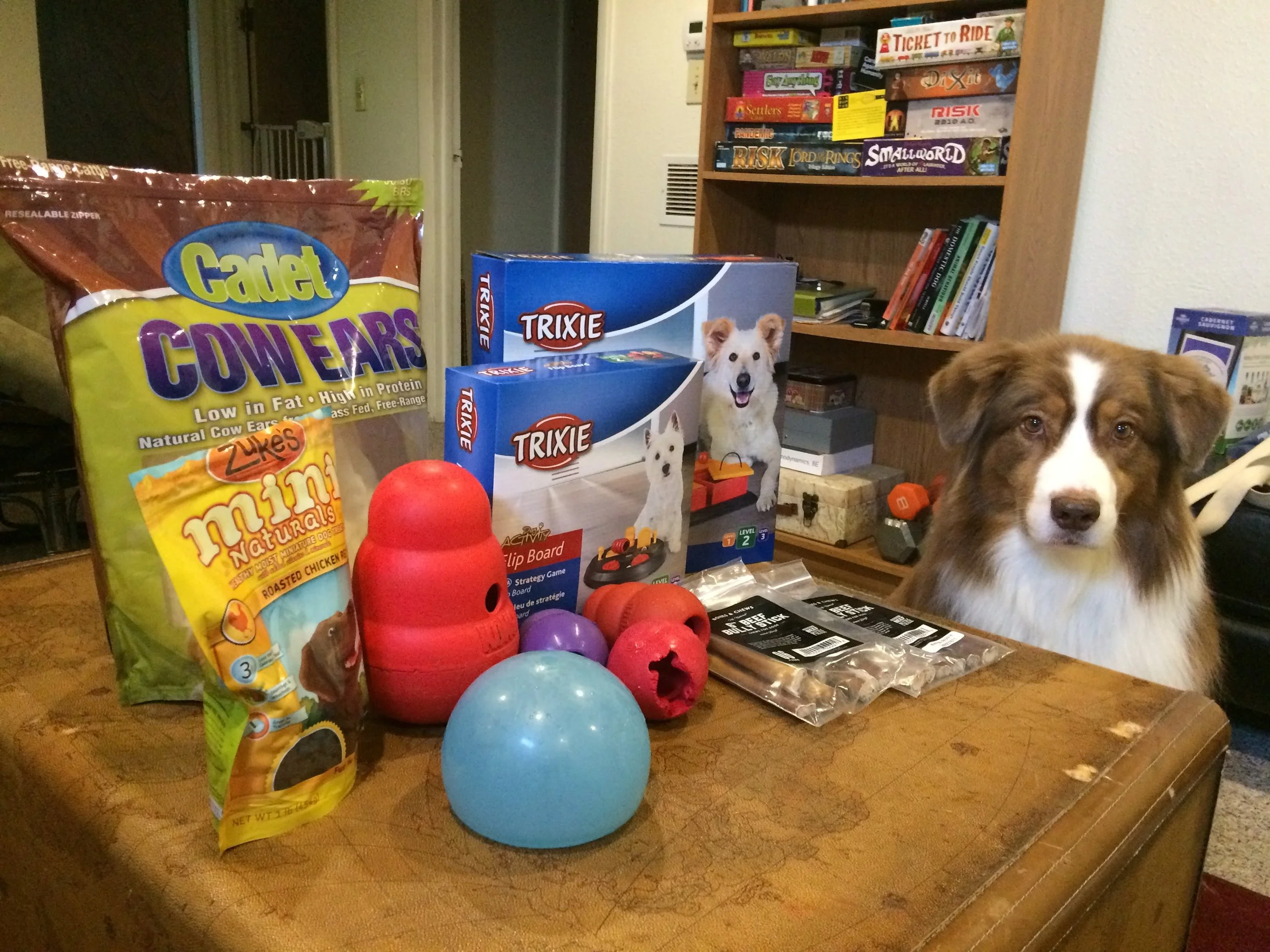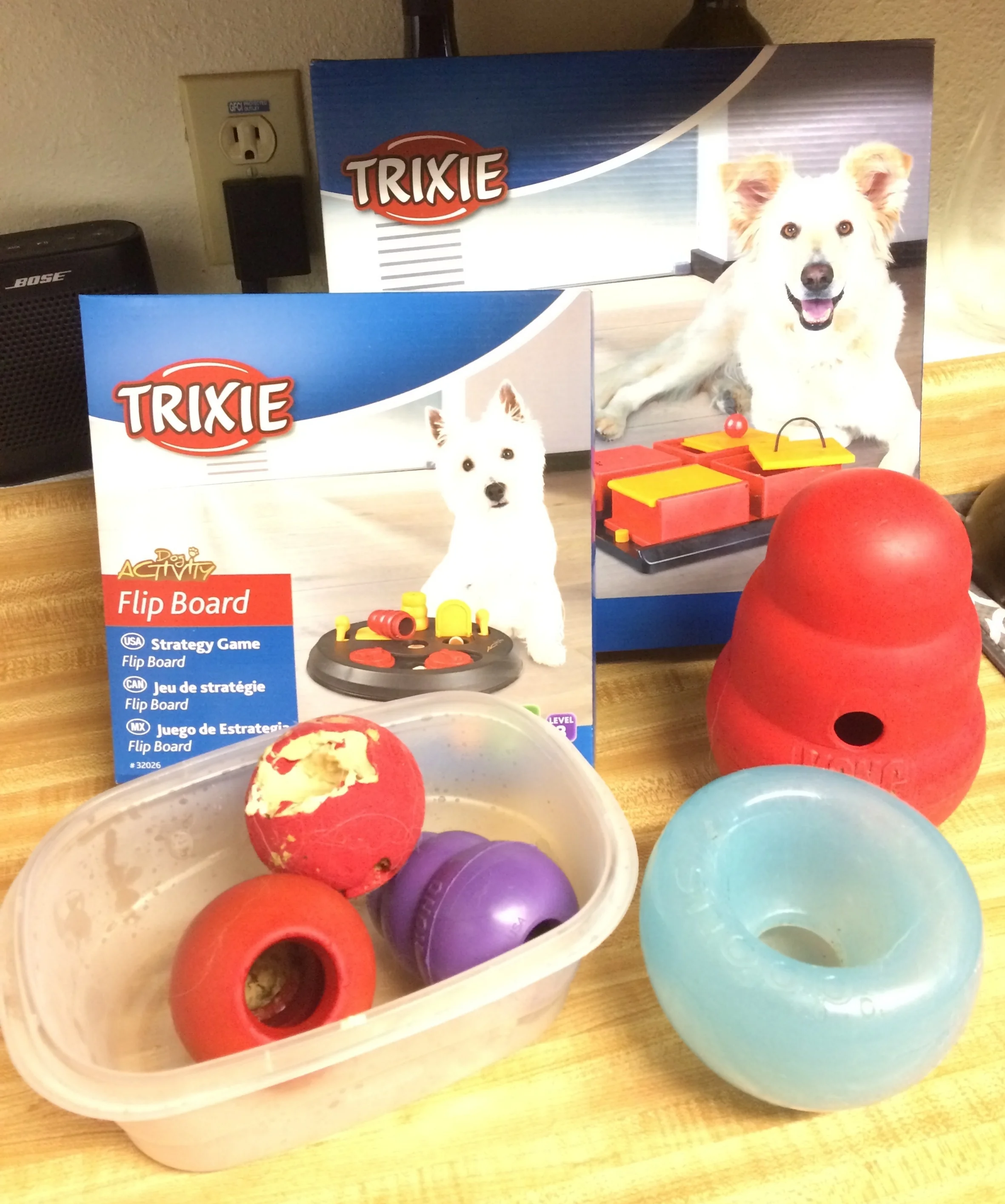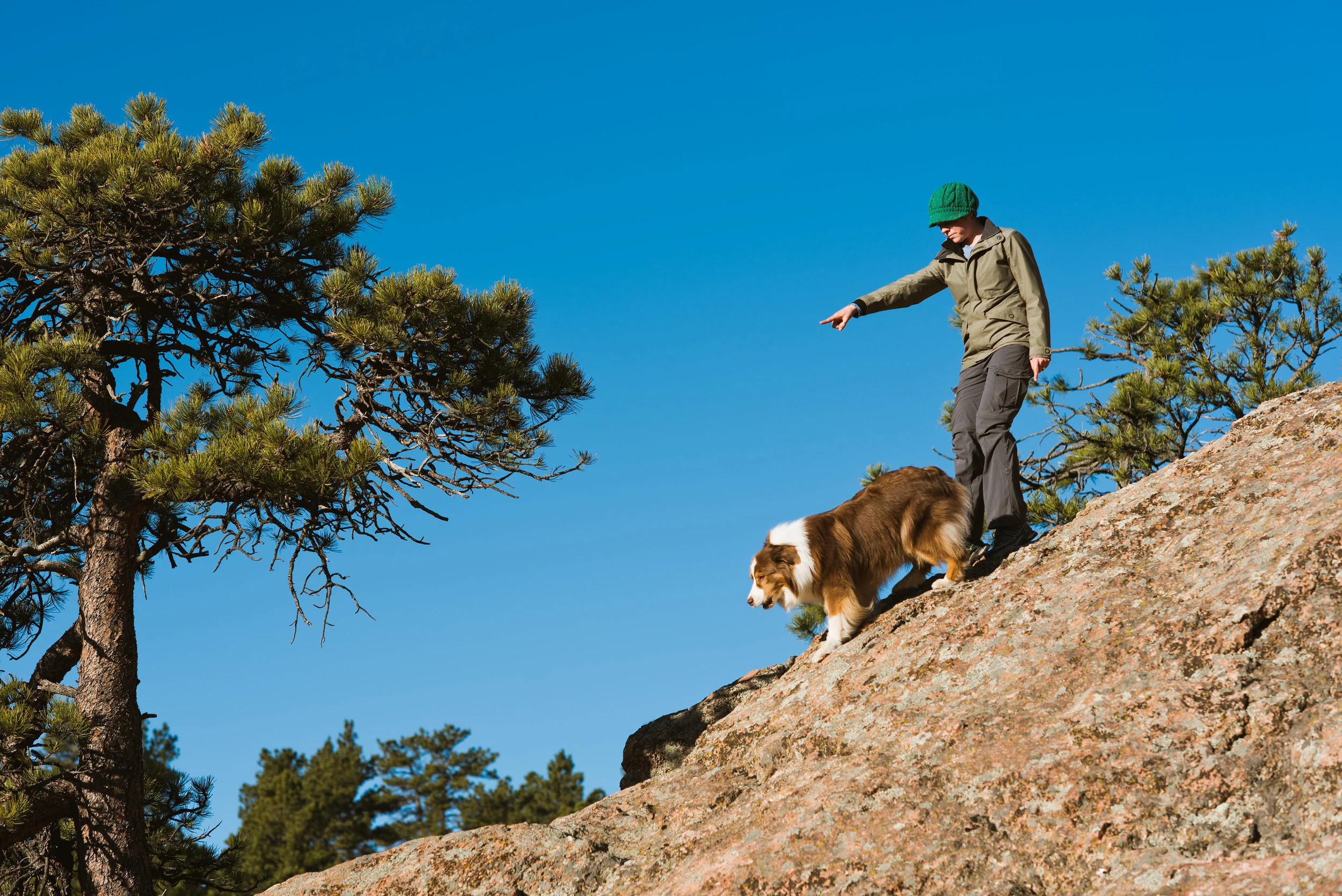Our dogs are a huge part of our lives, and they shower us with love all year long. Here are three ideas for how to show your special four-legged someone how much they mean to you this month!
- Go on a "Micro-Adventure" together. These mini adventures are one of our favorite things to build a positive relationship with our dogs. They don't have to be long or elaborate, just simple things that you can do together, like running errands, taking an extra walk to the park, or just riding around in the car. I just did this with my dog today - he got to ride with me to the grocery store, stop by Kriser's Natural Pet, drop by the training facility, and then end it with lots of attention at the bank. He loved it, and he's sound asleep now! We wrote more about micro-adventures in this blog; check it out for more ideas!
- Get them a new toy! But not just any toy - one that will challenge them mentally as well as physically! One of our favorite categories of toys are food puzzles. We wrote all about them in this blog post; check it out to see which option your pup might light best!
- Teach them a new trick! Our dogs get so excited to learn new things with us! And their "trick" skills are often the most exciting and reinforcing to our dogs, because we get so excited about them too! Teaching your dog something new can be as simple or elaborate as you want, but either way it's sure to be a fun time for both of you! I just taught my dog Roo some new tricks and he loved it!
These are just a few ideas for making this month a great month for you and your dog! If you come up with other great ideas, we want to hear about them! Tag us in your adventures on Facebook or Instagram and use #SDTmonthoflove so we can share in your excitement!











